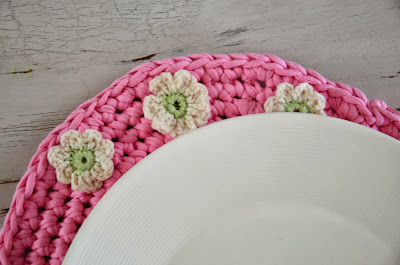I’m pausing my beehive project so I can answer some
questions I’ve had since last Sunday...
Many of you were interested in the long and short stitching
last week, so I’ll illustrate this technique a bit more. I’m going to use the Green Eggs & Ham piece I’ve been
working on, as I’m using long and short stitch for the letters.
I decided to do an experiment and try one leg of the ‘H’
with two strands of floss, and the other leg with one strand. The results are
interesting.
I could only work on this in the evening (tiny, detailed
stitching with young children buzzing around was next to impossible this week!),
so I used my daylight embroidery lamp and made the best of it. The fabric is
white, but in the photos it looks beige. Never mind, as long as I can
illustrate the stitches I’m not too fussed.
As I explained a bit in my last Stitching Sundays post, generally the technique starts with
staggered stitches in the first row. I chose to work from the top down, but you could work up from the bottom if you prefer. Start in the centre of the area to
be stitched and work out toward the sides – this is because sometimes a row
tends to start leaning in one direction, and if you’re working one side to
another, you can end up with a leaning row of stitches. Start with a straight
line in the middle, and either side will stay straight. Does this make sense?
Anyway, for the next row and subsequent rows, it is key to
bring the needle through the threads of the previous row. If you come up
between threads, you’re more likely to encounter gaps or holes in your finished
work. Splitting threads can be challenging at first, so have a bit of patience
and very quickly it becomes second nature!
I’ve used two strands of thread here, and it gives the
letters a rougher texture. But for the other side I used just one strand – see if
you notice the smoother appearance in the first rows:
Much of a muchness, really, it all depends on the look you
are after.
 |
| A black outline stitch will sort out those rough edges! |
For my purposes, I think I’ll go with the one-strand floss.
The letters are rather small, and I prefer the smoother finish of one strand.
However, I used two strands of yellow to fill in Sam-I-Am,
because I wanted a much bolder, almost furry texture to match his outline.
Give it a go with your next filling project and let me know
how it works for you!
Next up: tangled and knotted thread. I’ve had some queries
about avoiding tangles while stitching.
More than once I’ve been stitching along quite happily only
to discover my threads have formed a messy jumble on the back of my work.
Frustrating. And some stitchers find it difficult to even get started with more
than one strand of floss, because the threads become twisted.
I have three habits that have helped me steer clear of knots
and tangles. First, separate the threads:
No matter how many strands you are using, you should pull
each strand, one at a time, from the main skein of floss.
Allow the floss to bunch up below the thread you're pulling - it will easily fall back into place once the thread is freed.
Then lay the strands evenly together
Second tip: condition your thread. I have used Thread Heaven for
a few months, and I like the smoothness it gives to the strands of floss.
This is a tiny pot of a wax-like substance. You pull the
threads through it, then pull the floss through your fingers to remove any
excess conditioner and create a static charge between the threads. The
conditioner reduces the friction between the fabric and the floss – threads flow
easily through fabric and lay nicely.
This isn’t a necessity, but if you are having trouble with
frequent tangles, I would recommend giving it a try. I think I bought my Thread
Heaven from www.sewandso.co.uk for
£3.50, but feel free to Google away...
Finally, the most obvious tip is to check your work every
few stitches. I usually peek at the back of my work for the first few stitches,
as that’s when I often neglect to pull the floss through completely and end up
with tangles. If you get in the habit, then you’ll catch any little problems
before they become big problems!
That’s enough from me today, thank you for visiting, and a
warm welcome to my latest followers. Please do visit the links below each week,
these lovely embroiderers are working on such beautiful projects!
Chrissie x



















.jpg)































